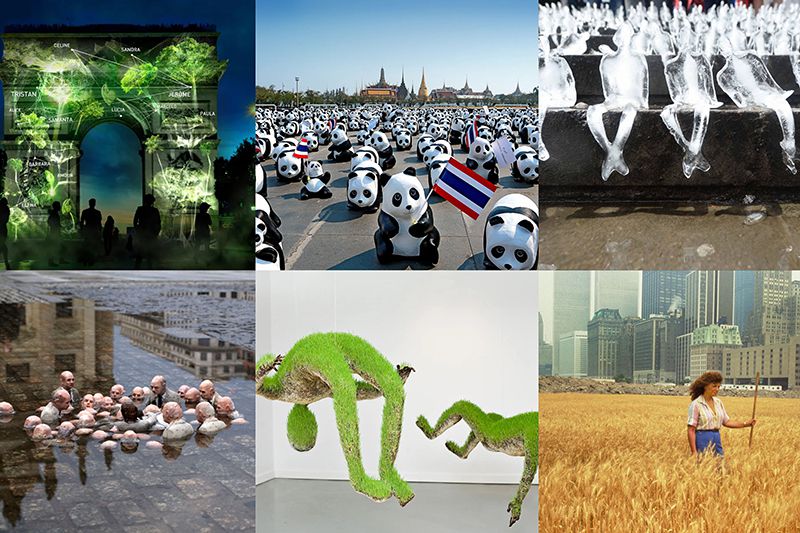Environmental art became famous at the end of the last century – as a protest response by virtuosos to the growing problem of human influence on environmental pollution. Environmental art installations are called to save and protect nature. A few stories about talented creators and their most extraordinary performances are presented in this column. Here we go.
Naziha Mestaoui's “1 Heart 1 Tree”
Naziha speaks up about the problem of deforestation and an informed attitude towards nature, so she came up with the idea of creating digital gardens to reunite humanity with nature, projecting digital images of plants among urban spaces. Using an app on the smartphone, anyone can plant their tree and watch it grow as the seedling grows in rhythm with the human heartbeat. Parisians and visitors to the capital have already seen the digital forests planted with video-mapping techniques of the Amazon displayed in projections on the Eiffel Tower and the Arc de Triomphe.
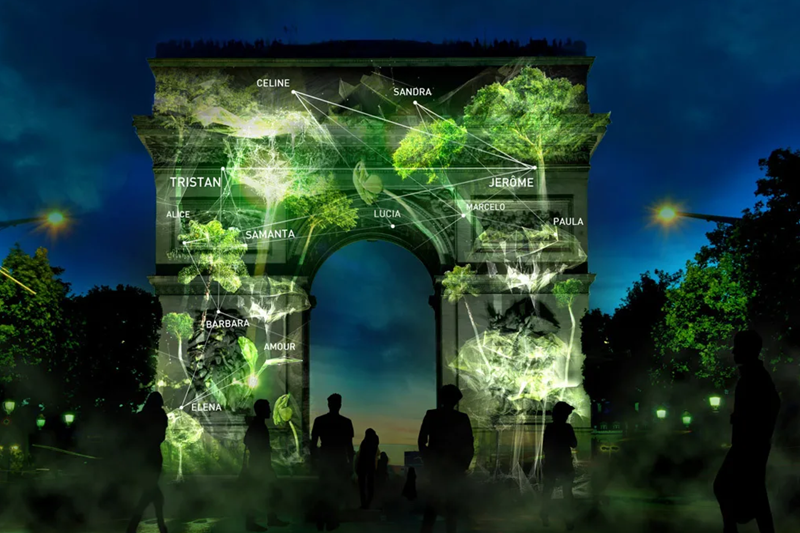
Paulo Grangeon's 1,600 Pandas
Another French artist Paulo Grangeon, in collaboration with the World Wildlife Fund (WWF) and the creative studio AllRightsReserved, created a new installation of 1,600 papier-mâché pandas, which became a new symbol of the eco-movement. The number was not chosen by chance, this is exactly the number of pandas living on the planet, although because pandas are elusive in the wild, it is difficult to say exactly how many of them are left. The project of environmental art traveled around the world, and the funds raised were donated to protect endangered species in Thailand, not only pandas but also Asian elephants and Indochinese tigers.
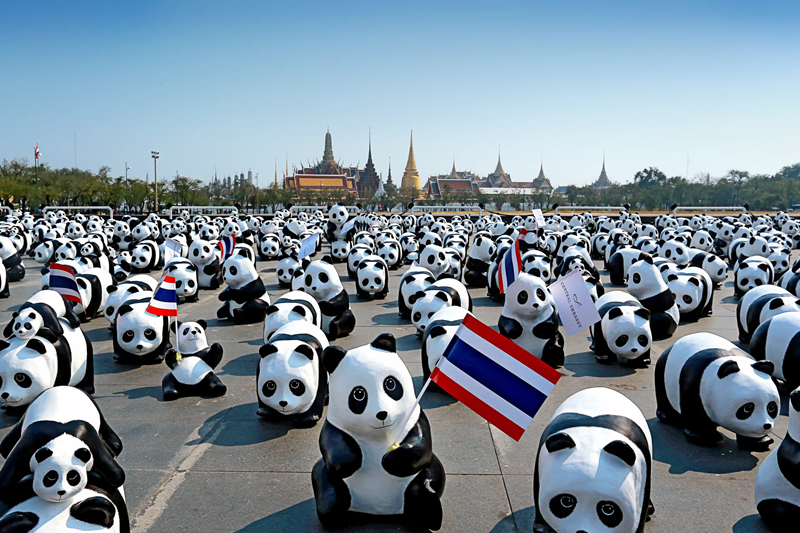
Néle Azevedo Minimum Monument
The Brazilian artist Néle Azevedohas drew attention to the issue of environmental protection with her ice works in cities around the world with the art project called Minimum Monument. The installations “Melting People” are ephemeral tiny ice figures that represent the fragility and vulnerability of nature to anthropogenic activity. And thousands of melting people remind us of the transience of life and biospheric processes around us.
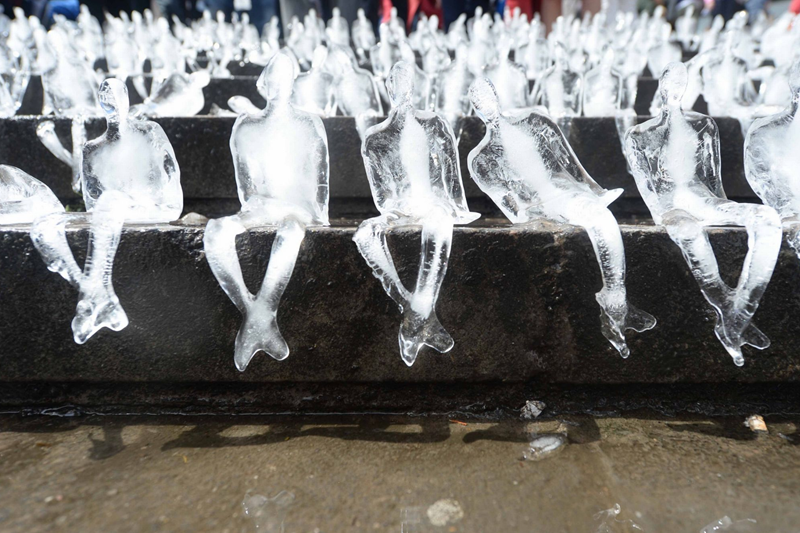
Politicians Discussing Climate Change
Sculpture, photography, and public debate are the main instruments in the works of the Spanish artist Isaac Cordal. His sculptures in the form of small people made of concrete, appearing in the most unexpected places in different cities, are unconventional and unnoticeable to the crowd. But an attentive passerby, spontaneously discovering an art object in a puddle or on a bench near a bus stop, will find in them many controversial questions and omissions about the interaction of society and government officials. The sculptor expressed a special vision of his world in his famous work “Follow the Leaders”.
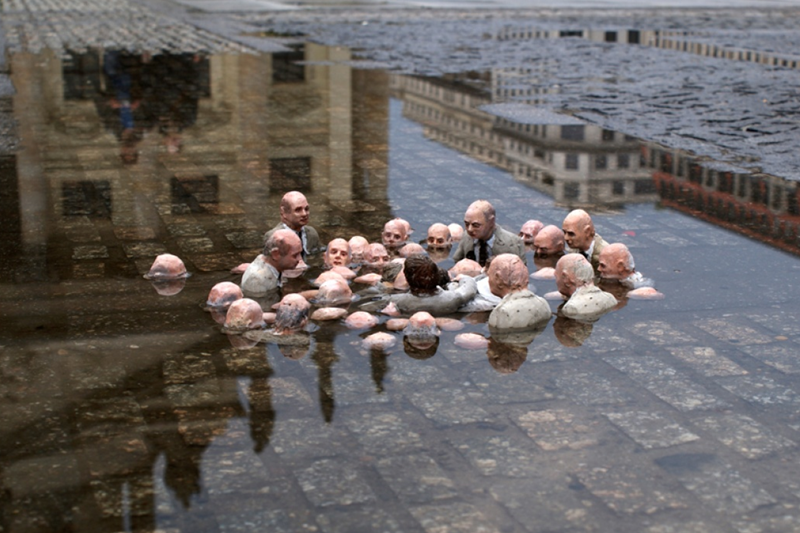
Mathilde Roussel's Living Sculptures
Presents his art objects, created from grass in the form of green hovering men, as part of science fiction and symbolizing the unity of nature and mankind. These artworks reflect on the possibilities of future technologies that will allow humanity to function in harmony with the environment, rationally using the energy of photosynthesis. Hovering in the air, inertly frozen in space and time, taking different poses – the figures symbolize the dynamism of the life flow with nature.
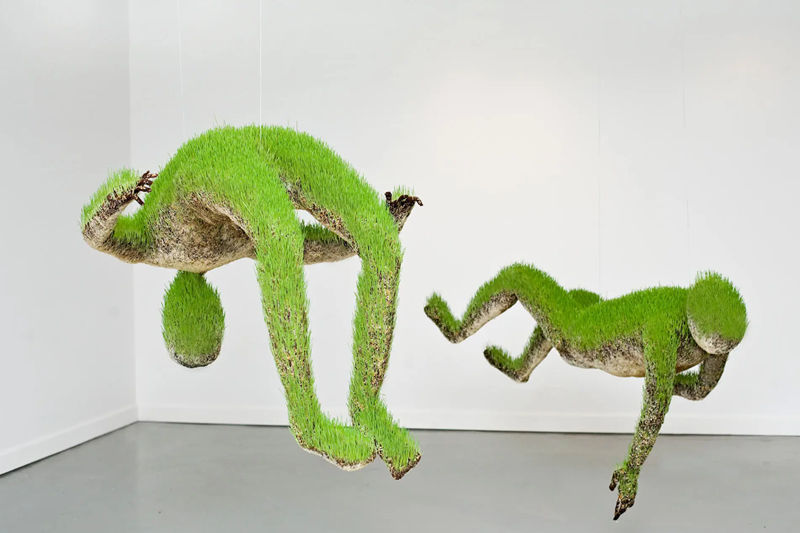
Agnes Denes's Wheatfields
One of the discussed art objects in environmental art is a two-acre wheat field planted and harvested by the artist in the Battery Park dump in central New York in the summer of 1982. Protesting against inequality and irrational distribution of resources and income, wealth and food, global warming, and patriarchy, Agnes Denes cleared the land of garbage with her own hands, dug furrows, and sowed them with grain. The golden wheat field with the harvest became a stunning contrast against the background of urban views, emphasizing how far the bang was torn away from nature and its balance.

“Art is a harmony parallel with nature.” Paul Cezanne. Through various forms of performance in environmental art, environmental activists call for conscious consumption of resources and protection of the natural environment by reducing and rethinking human impact. Art has become an integral part of protest and demonstration of environmental protection through art.
